41 nutrient content claims on food labels
Food Packaging Claims | American Heart Association Status of Nutrition Labeling, Health Claims, and Nutrient Content ... Status of Nutrition Labeling, Health Claims, and Nutrient Content Claims for Processed Foods: 1997 Food Label and Package Survey - PubMed The Food and Drug Administration (FDA) conducts studies of food labels as part of its ongoing monitoring of the nutritional status of the US population.
Understanding Food Labels | The Nutrition Source | Harvard T.H. Chan ... Under the Food Allergen Labeling and Consumer Protection Act of 2004, eight major food allergens—milk, fish, tree nuts, peanuts, shellfish, wheat, eggs, and soybeans—are required to be listed in a "contains" statement near the Ingredients list if present in a food. An example would be "contains wheat, milk, and soy."
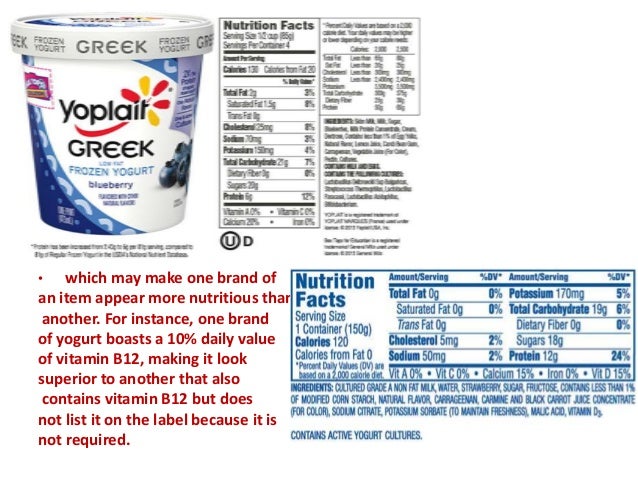
Nutrient content claims on food labels
Nutrient Content Claims on a Food Label - LabelCalc The food product nutrition content must meet the strict guidelines and parameters set forth by the FDA in order to accurately make these nutrient content claims on a food label. For a more in-depth look at nutrient content claims, download this PDF. A Quick Reference Summary of Parameters Nutrient content claims - LII / Legal Information Institute (b) A claim that expressly or implicitly characterizes the level of a nutrient of the type required to be in nutrition labeling under § 101.9 or under § 101.36 (that is, a nutrient content claim) may not be made on the label or in labeling of foods unless the claim is made in accordance with this regulation and with the applicable regulations ... eCFR :: 21 CFR 101.54 -- Nutrient content claims for "good source ... ( 1) if a nutrient content claim is made with respect to the level of dietary fiber, that is, that the product is high in fiber, a good source of fiber, or that the food contains "more" fiber, and the food is not "low" in total fat as defined in § 101.62 (b) (2) or, in the case of a meal product, as defined in § 101.13 (l), or main dish product, …
Nutrient content claims on food labels. inspection.canada.ca › food-labels › labellingFoods to which vitamins, mineral nutrients and amino acids ... Nutrient content claims: reference information Foods to which vitamins, mineral nutrients and amino acids may or must be added [D.03.002, FDR] Note: In the second column of this table, "mandatory" refers to nutrients that must be present in the food at levels specified in the Food and Drug Regulations (FDR). For some mandatory requirements ... Food Labeling: Nutrient Content Claims; Alpha-Linolenic Acid ... To enable the public to comprehend the information provided in nutrient content claims and to understand the relative significance of that information in the context of the daily diet, as required by section 403(r)(2)(G)(iv) of the FD&C Act, qualifying ALA levels for nutrient content claims in food labeling must be based on a single nutrient ... Factual Food Labels: Health Claims - Master of Science in Nutritional ... This type of claim describes the nutritional content and nutrient levels of the food product in comparison to the accepted standard of the product. The terms that are used in this type of label is "free," "reduced," "high," and "low." These type of claims are only applicable to nutrients that have a % daily value established ... › food › food-labeling-nutritionLabel Claims for Conventional Foods and Dietary Supplements Mar 07, 2022 · Among the claims that can be used on food and dietary supplement labels are three categories of claims that are defined by statute and/or FDA regulations: health claims, nutrient content claims ...
Factual Food Labels: Health Claims Nutrient Content Claims In 1990 under the same Nutrition Labeling and Education Act, nutrient content claims were also allowed on food packaging. This type of claim describes the nutritional content and nutrient levels of the food product in comparison to the accepted standard of the product. Food Packaging Claims | American Heart Association "Nutrient content claims" are used for two purposes: To describe the level of a nutrient in the product using terms such as free, high, and low or To compare the level of a nutrient in a food to another food using terms such as more, reduced, and lite. Nutrient Content - an overview | ScienceDirect Topics A nutrient content claim either expressly or implicitly characterizes the level of a nutrient in a product (e.g., "high in vitamin C" or "low in sodium"). In general, nutrient content claims cannot be used in food labeling unless the claim is made in accordance with existing FDA regulations or an authoritative statement by a scientific body. Regulating health claims on food labels using nutrient ... - PubMed Nutrition composition and ingredients were collected from the packaging, enabling nutrient profiling. The proportion of products in each category carrying claims and the proportion of these that did not meet the nutrient profiling criteria were calculated. Results: Of those carrying health claims, 31 % did not meet the nutrient profiling criteria.
Nutrient Claims on Food Labels - Truly Good Foods Nutrient Claims on Food Labels July 19, 2018 Nutrient claims describe the content of a food, including the amount of nutrients, calories, cholesterol or fiber, but not in exact amounts. Usually on the front of the food label, the nutrient claim provides a quick comparison between similar products. 21 CFR § 101.65 - Implied nutrient content claims and related label ... (a) General requirements. An implied nutrient content claim can only be made on the label and in labeling of the food if: (1) The claim uses one of the terms described in this section in accordance with the definition for that term; (2) The claim is made in accordance with the general requirements for nutrient content claims in § 101.13; and (3) The food for which the claim is made is labeled ... › food › food-labeling-nutritionLabel Claims for Food & Dietary Supplements | FDA Mar 07, 2022 · Among the claims that can be used on food and dietary supplement labels are three categories of claims that are defined by statute and/or FDA regulations: health claims, nutrient content claims ... Nutrient Claims on Food Labels | Home & Garden Information Center Sodium content cannot exceed 360 mg per serving for individual foods and 480 mg per serving for meal-type products. If a food is labeled "healthy" or makes a health claim, it cannot contain any nutrient that increases the risk for disease. It must contain no more than 20% of the DV per serving of total fat, saturated fat, cholesterol, or sodium.
› scripts › cdrhCFR - Code of Federal Regulations Title 21 - Food and Drug ... Mar 29, 2022 · (b) Label statements that are not implied claims. Certain label statements about the nature of a product are not nutrient content claims unless such statements are made in a context that would make them an implied claim under § 101.13(b)(2). The following types of label statements are generally not implied nutrient content claims and, as such ...
Nutrient content claims - Canadian Food Inspection Agency Specific nutrient content claim requirements How to use the claims tables Energy and calorie claims Protein claims Fat claims Saturated fatty acid claims Trans fatty acid claims Omega-3 and omega-6 polyunsaturated fatty acid claims Cholesterol claims Sodium (salt) claims Potassium claims Carbohydrate and sugars claims Dietary fibre claims
› understanding-food-labelsUnderstanding food labels - Canada.ca Find information on food labels and how to understand them. Learn about nutrition facts tables, serving size, list of ingredients, % daily value and nutrition claims.
Nutrition, health and related claims - Food Standards Standard 1.2.7 - Nutrition, health and related claims in the Food Standards Code (the Code) set out requirements for making nutrition content and health claims about food. Find out more about the Standard and the different types of claims. The Implementation Subcommittee for Food Regulation (ISFR) has guidance on how to comply with Standard 1 ...
Nutrient Content Claim vs Health Claim - LabelCalc Nutrient content claims, which are commonly used on food labels, either refer to the amount of a nutrient in a product or compare the levels of a nutrient in that food to a similar reference food. When referring to the amount of a nutrient in a product, words such as "low," "free," and "high" are often used.

Factual Food Labels: Health Claims - UT Austin 100% Online Master of Science in Nutritional Science
Nutrient content claims: what they mean - Canada.ca Table of nutrient-content claims and what they mean. The food provides an amount of a nutrient that is so small it likely won't have any effect on your body. The food is processed/modified so that it contains at least 25% less of the nutrient when compared with a similar product. Contains no added fats or oils or added butter or ghee, or ...
Nutrition content claims and health claims - Food Standards Nutrition content claims are about the content of certain nutrients or substances in a food, such as 'low in fat ' or 'good source of calcium'. These claims need to meet certain criteria. For example, food with a 'good source of calcium' claim needs to contain at least the amount of calcium specified in the Standard. Health claims
16 Best Images of Nutrition Label Worksheet - Printable Food Nutrition Labels Worksheet, Food ...
Understanding Food Labels and Health Claims - Nutrition Essentials This label is called a Nutrition Facts panel, which gives information on the number of servings per container, the number of calories per serving, and certain nutrients. Specifically, it lists the macronutrients and four of the most important micronutrients people need to pay special attention to, such as Vitamin D, Calcium, Iron, and potassium.
Nutrition claims - Canada.ca There are two types of nutrition claims on foods: nutrient content claims and health claims. These claims must also follow certain rules from Health Canada to make sure that they are consistent and not misleading. These claims are optional and may be found on some food products. Nutrient content claims describe the amount of a nutrient in a food.
inspection.canada.ca › food-labels › labellingVitamin and mineral nutrient claims - Specific nutrient ... When used in an advertisement, must comply with the Advertising requirements for nutrient content claims. D.01.004 D.02.002 B.01.402(4) B.01.401(3)(e)(ii) b) "good source of" "high in" The vitamin or mineral must be set out in column 1 of Part 2 of the Table of daily values. The food provides ≥15% of DV, except ≥30% of DV for vitamin C.
The Effects of Nutrition Knowledge on Food Label Use: A Review of the ... One goal of nutrient content claims is to communicate the value or relative amount of a specific nutrient within a food product (e.g., good source of fiber, fat free, low calorie). ... Petrovici D, Fearne A, Nayga RM, Drolias D. Nutritional knowledge, nutritional labels, and health claims on food a study of supermarket shoppers in the south ...
› scripts › cdrhCFR - Code of Federal Regulations Title 21 - Food and Drug ... Mar 29, 2022 · A claim about the calorie or sugar content of a food may only be made on the label or in the labeling of a food if: (1) The claim uses one of the terms defined in this section in accordance with the definition for that term; (2) The claim is made in accordance with the general requirements for nutrient content claims in § 101.13;
Nutrient Content Claims | FDA Nutrient Content Claims. See Claims That Can Be Made for Conventional Foods and Dietary Supplements for definitions of claims. Final Rule: Food Labeling: Nutrient Content Claims; Alpha-Linolenic ...
Nutrition claims - Food Safety A claim that a food is high in omega-3 fatty acids, and any claim likely to have the same meaning for the consumer, may only be made where the product contains at least 0,6 g alpha-linolenic acid per 100 g and per 100 kcal, or at least 80 mg of the sum of eicosapentaenoic acid and docosahexaenoic acid per 100 g and per 100 kcal.
Food Packaging Claims | American Heart Association CPR & First Aid There are three categories of claims defined by statute and/or FDA regulations that can be used on food and dietary supplement labels: health claims, nutrient content claims, and; structure/function claims. A "health claim" by definition has two essential components: A substance (whether a food, food component, or dietary ingredient) and
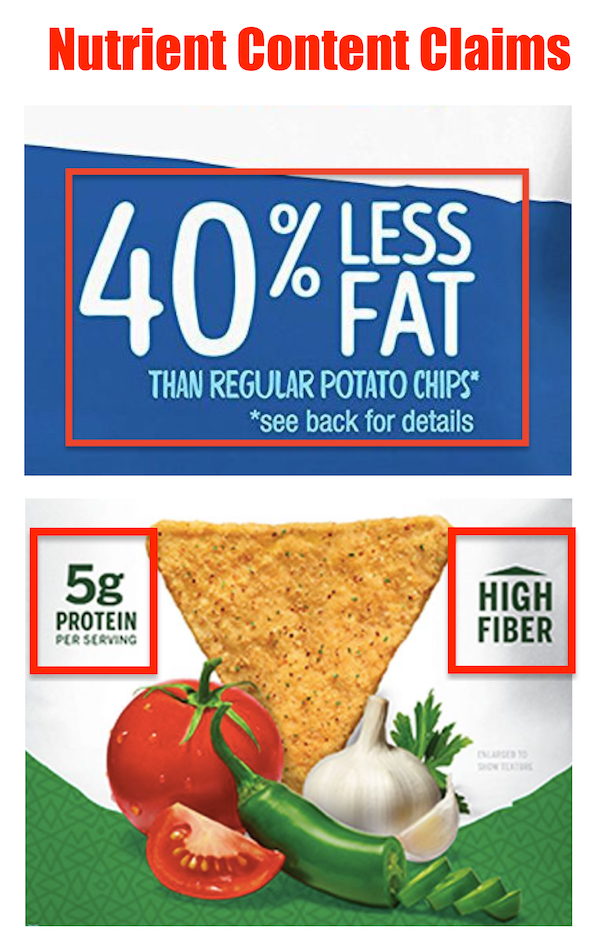

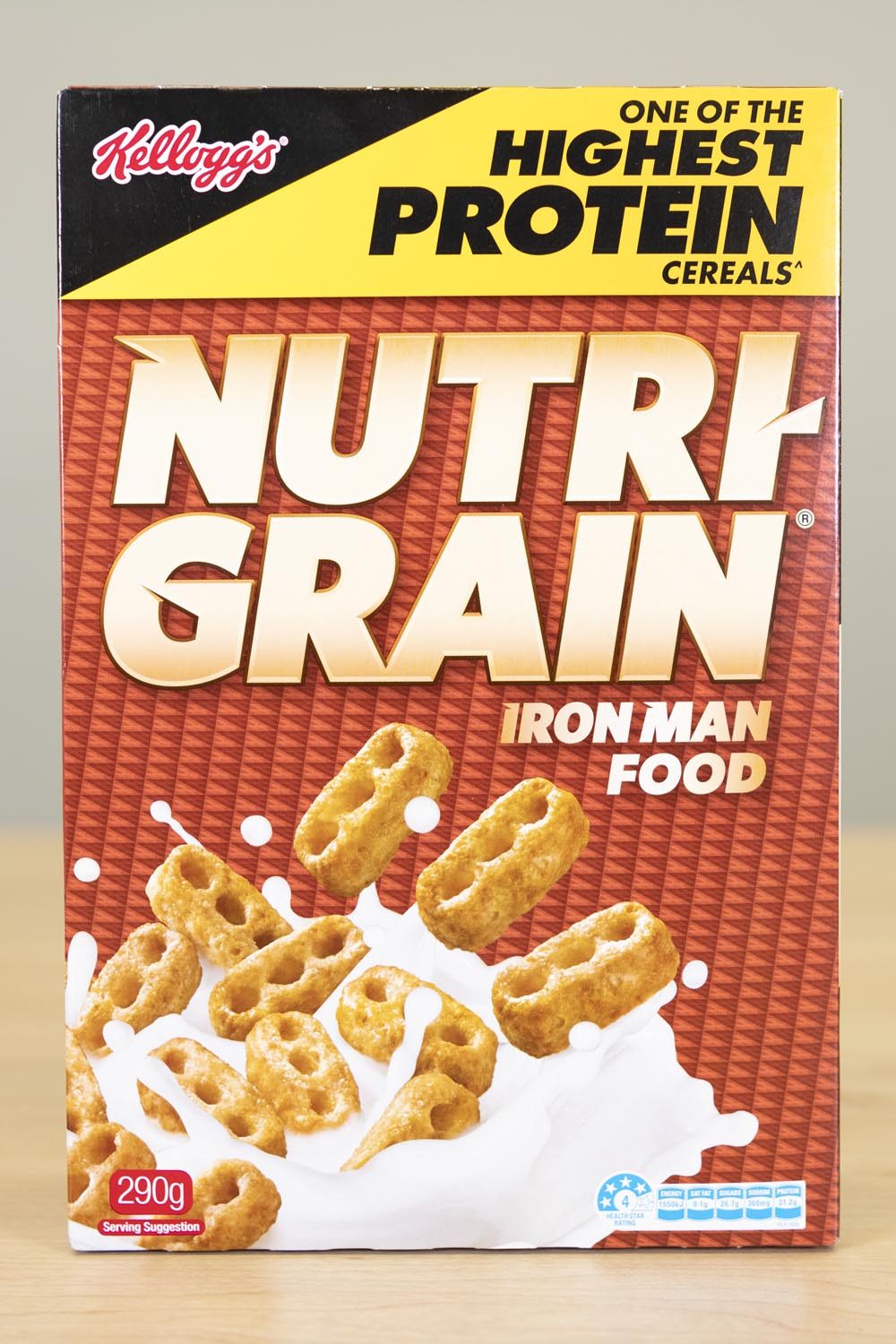

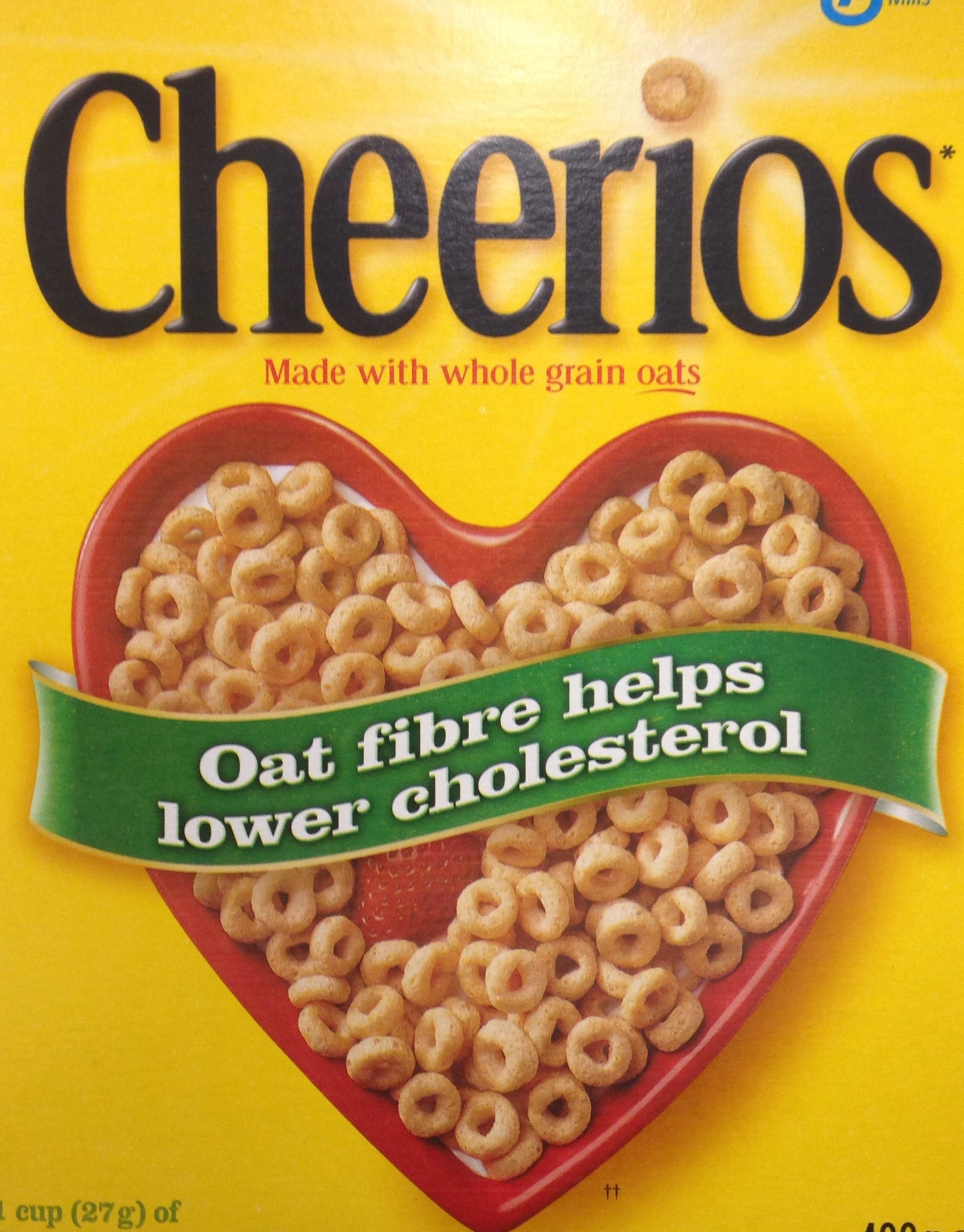

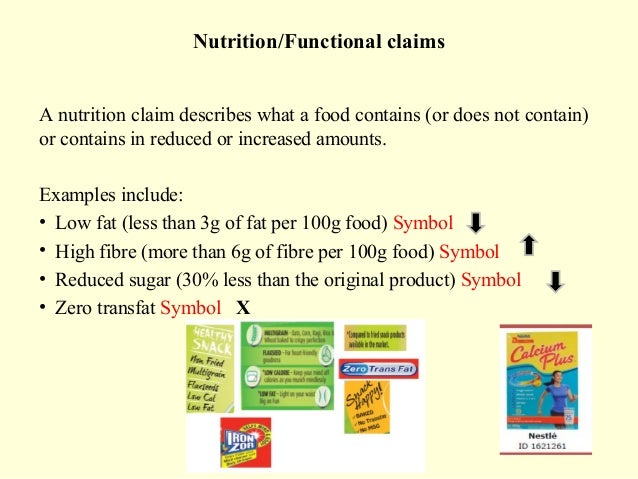
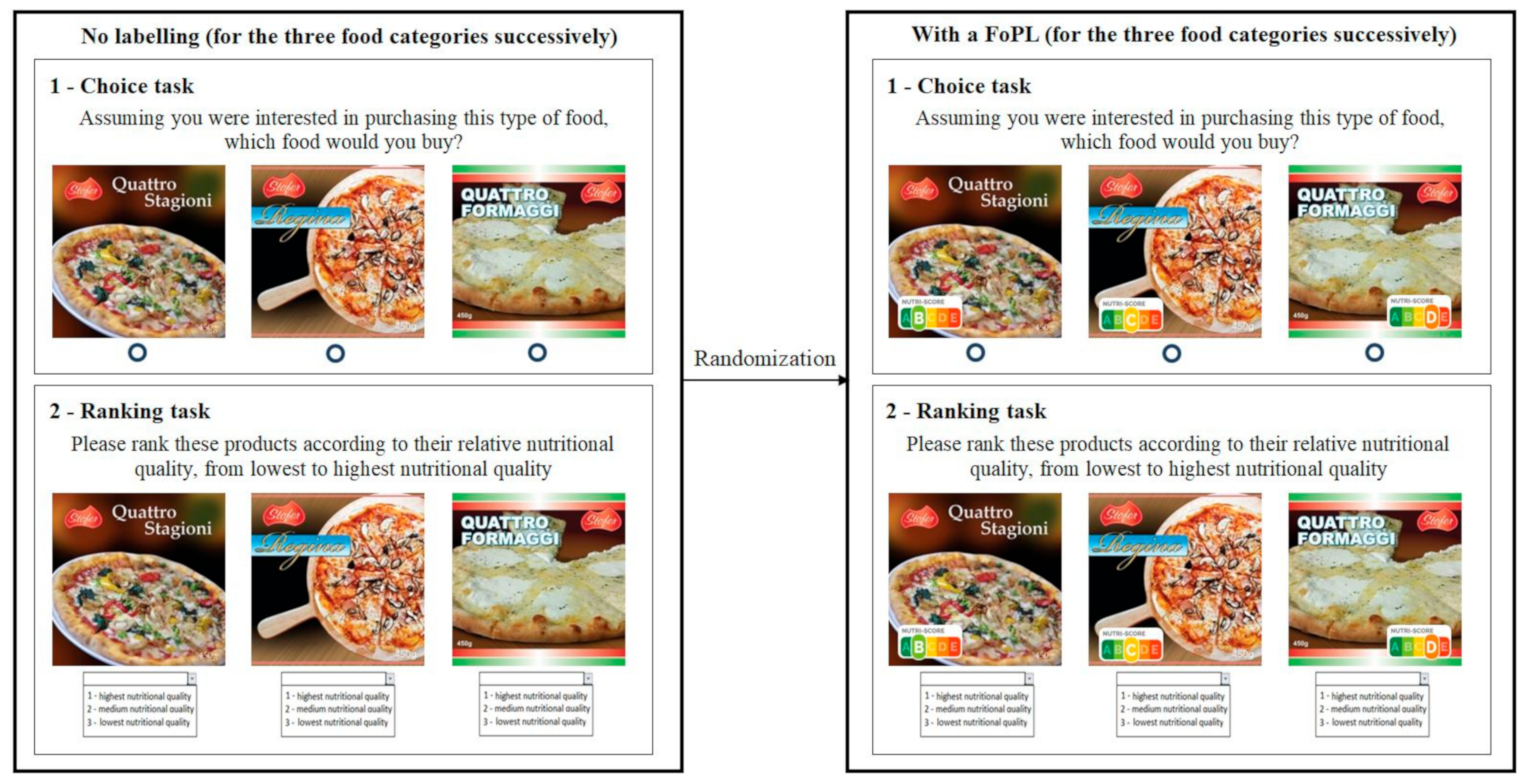
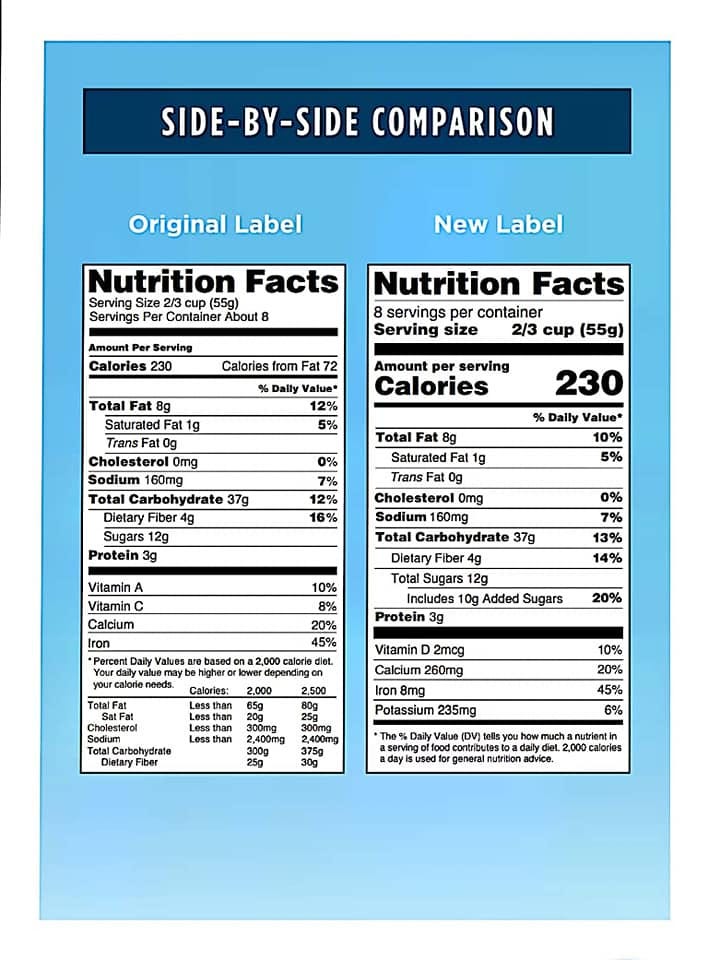
Post a Comment for "41 nutrient content claims on food labels"